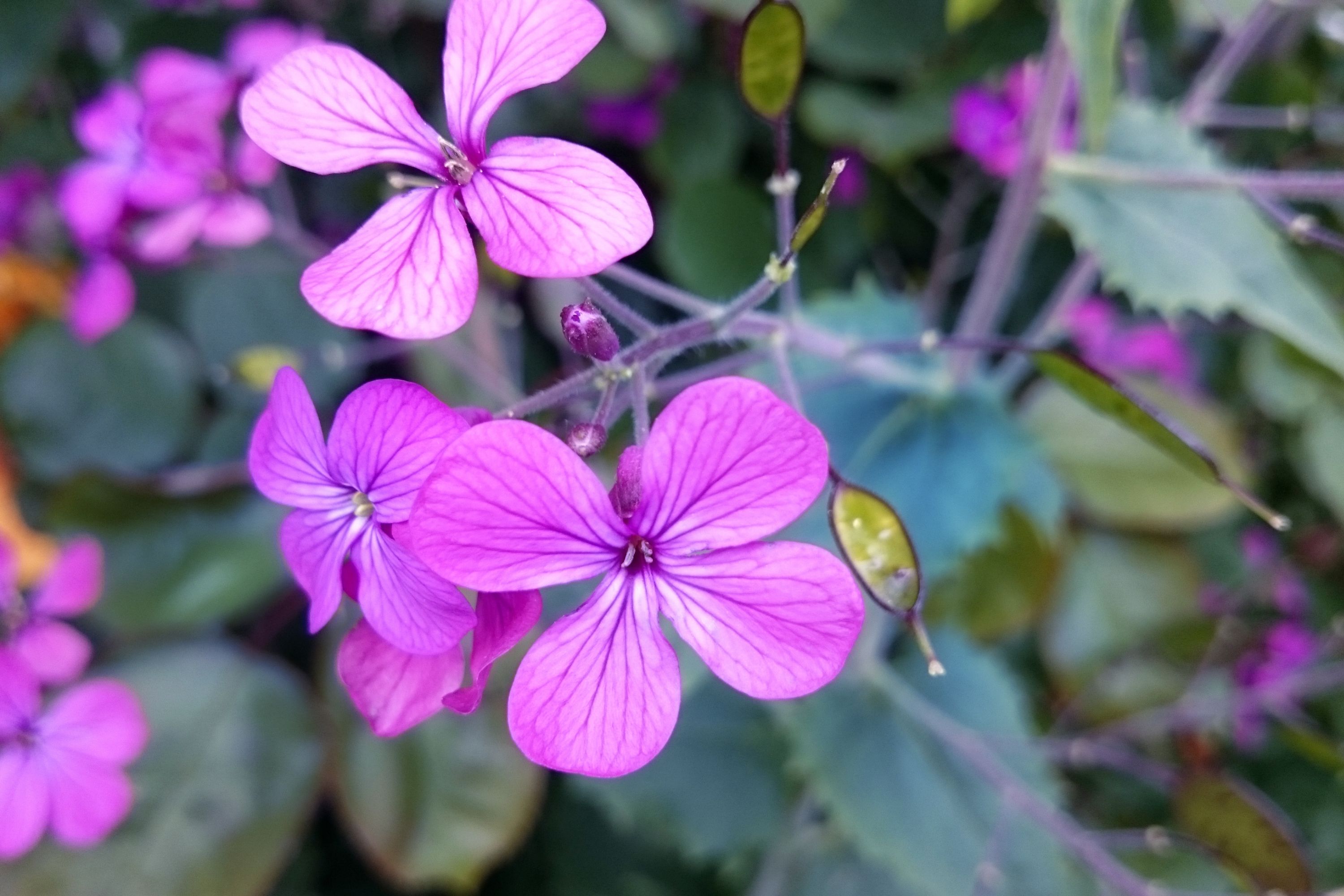Silver dollar plant
(Lunaria annua)

Description
Lunaria annua, commonly known as Honesty or Silver Dollar Plant, is a biennial plant that is native to the regions of Southeast Europe and Southwest Asia. This plant belongs to the Brassicaceae family and is widely cultivated for its attractive, silver-white, papery seed pods that resemble coins. In this article, we will delve deeper into the various aspects of this plant, including its history, growth requirements, propagation, care, and uses. History and Etymology The name Lunaria annua is derived from the Latin word "luna," meaning moon, referring to the shape of its seed pods. The species name, annua, indicates that this plant completes its life cycle within a year. This plant has been cultivated for ornamental purposes since the 16th century, but it was also grown for medicinal and culinary uses in ancient times. Description Lunaria annua is a biennial plant that grows up to 3 feet (1 meter) in height. It produces basal leaves that are large, heart-shaped, and hairy. The stem leaves are smaller, ovate, and clasping. The flowers, which bloom in late spring to early summer, are a pale lilac to white color and are produced in racemes. The fruit of this plant is a flat, round, silver-white, papery seed pod, which is 2-3 inches (5-8 cm) in diameter. The seed pods remain on the plant even after the flowers have faded, providing interest and beauty to the garden long after the growing season has ended. Growth Requirements Lunaria annua prefers to grow in well-drained soil that is rich in organic matter. It grows best in full sun to partial shade, but it can tolerate shade. This plant is hardy in USDA zones 4-8 and can withstand temperatures as low as -30°F (-34°C). It requires moderate watering, and its soil should be kept consistently moist but not waterlogged. It is susceptible to root rot, so it is essential to avoid overwatering. Propagation Lunaria annua can be propagated through seeds. The seeds can be sown directly in the garden bed in early spring or late summer. The seeds should be sown thinly and covered with a thin layer of soil. The seedlings should be thinned to a distance of 12-18 inches (30-45 cm) apart to allow for proper growth. This plant also self-seeds readily, so it is essential to deadhead the spent flowers to prevent it from becoming invasive. Care Lunaria annua is a low-maintenance plant that requires minimal care. The soil should be kept consistently moist, but not waterlogged. Fertilization is not necessary, but the addition of compost or organic matter to the soil can promote healthy growth. This plant is generally pest and disease-free, but it may be susceptible to aphids and powdery mildew. It is important to monitor the plant for signs of infestation and treat accordingly. Uses Lunaria annua is primarily grown for its ornamental value. The seed pods of this plant are used in dried flower arrangements and can be used as decorative elements in wreaths and bouquets. This plant is also used as a bedding plant or as a border plant in garden beds. In addition to its ornamental value, this plant has been used for medicinal purposes. The leaves of Lunaria annua contain glycosides, which have diuretic and laxative properties. The plant has also been used as a remedy for bronchitis, asthma, and coughs. In conclusion, Lunaria annua is a beautiful and versatile plant that is easy to grow and care for.
Taxonomic tree:







